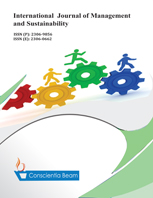Turnover Intentions among Gen Y in Malaysia’s Banking Industry
DOI:
https://doi.org/10.18488/11.v11i3.3126Abstract
The research aims to study the Gen Y turnover intention in the banking industry. The study took a quantitative approach that focuses on collecting numerical data that can be examined using statistical methods before being translated into information using quantitative techniques to understand the phenomena of turnover intention among Gen Y. Questionnaires were distributed online in convenient ways to enable the respondent to provide their feedback any-time and from anywhere. It was a non-probability sampling where questionnaires were distributed to respondents in the banking industry aged between 23-36 years. A set of hypotheses arising from a theoretical model of turnover intention was tested using SPSS. Empirical results revealed that only two variables significantly influenced turnover intention. Two independent variables, reward, and job satisfaction, show a significant relationship with the turnover intention of Gen Y in the banking industry of Malaysia. Employee engagement verified that it does not support the hypothesis and has no significant relationship. The research provides a clinical study on the relationship between Gen Y’s turnover intention with rewards, job satisfaction and employee engagement in the banking industry of Malaysia, where the findings will benefit the industry and academic field as an additional review or reference for future research. Employers will have a better understanding of which area of improvement to enhance an organization's performance and a clear understanding of employee needs.

